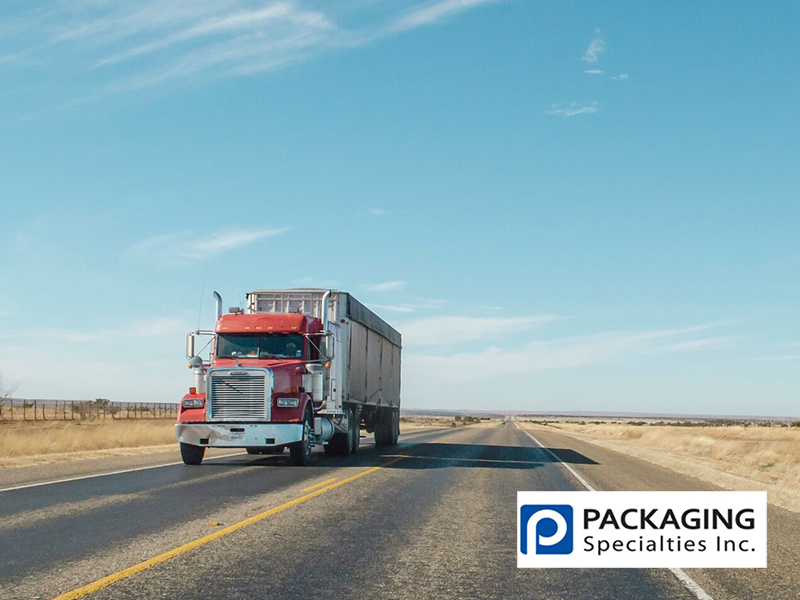Radioactive materials play a vital role in today’s society, from helping smoke detectors be more effective to treating once terminal illnesses. The Department of Transportation (DOT) oversees the regulations governing shipping containers for radioactive materials throughout our country while the Department of Energy (DOE) operates a testing and evaluation program to certify that these containers meet the DOT’s requirements. Within that scope, there are strict guidelines for getting radioactive materials where they need to go, including in developing standards for DOT 7A Type A Containers.
Using weights and masses provided by our customers, Packaging Specialties performs representative 7A Style tests on carbon steel and stainless-steel drums to the specifications provided by the DOT. However, it is the responsibility of the party filling the containers to work with the DOE and DOT to perform engineering evaluations and/or further testing to ensure the packages are certified as DOT 7A Type A containers. We at Packaging Specialties are happy to provide resources to our customers to help them ensure their radioactive materials are being shipped according to DOT regulations.
What is a DOT 7A Type A Container?
A DOT 7A Type A container is a shielded container designed to confine and shield small quantities of Class 7 (radioactive) materials inside. The Department of Transportation strictly regulates the packaging and transport of Class 7 materials, further breaking the class down into four types, separated by how much radioactive material is being shipped.
- Excepted – packages containing very low amounts of radioactive materials
- Industrial – packages containing radioactive waste
- Type A – packages containing non-life endangering amounts of radioactive materials
- Type B – packages containing the highest, and life endangering, amounts of radioactive materials
As the level of radioactive material increases, stronger packaging is required to limit the risk of shipping Class 7 materials. Typically, Type A packages have a sealed inner container, made of carbon steel or stainless steel, and an outer package like a wood, plastic, or fiberboard box. The Department of Transportation requires that packaging designed to transport Type A materials undergo a battery of tests to simulate regular transport conditions, including a water test (to simulate heavy rains), a free fall drop test, a stacking test, and a penetration test. DOT 7A Type A packages are not designed (or tested) to withstand accident conditions because they do not contain enough Class 7 material to pose a substantial health or environmental risk should the material be released during an accident.
One common misconception is that a DOT 7A Type A package has a shape or design specified by the Department of Transportation. In reality, the shape or design is not specified. A package is only certified as a DOT 7A Type A package after performance standards are met, according to this excerpt from a Department of Energy Memorandum on DOT 7A Type A packages:
Essentially, the only authorized Type A package in the DOT regulations is the DOT specification 7A (see §178.350), which is based totally on performance test conditions rather than on hardware or design requirements. Using any of the methods authorized in §173.461, each shipper of a DOT-7A package must determine if the design meets the performance requirements in §§173.412 and 173.465, and then must document and maintain this evaluation or “self-certification” on file for at least one two years after the last shipment, per §173.415(a).
What types of materials require DOT 7A Type A Containers?
DOT 7A Type A packages can contain a wide range of non-life endangering amounts of radioactive materials. For transport, “radioactive material” is defined as any material having a specific activity of greater than 0.002 micro-curies per gram. Common materials which require DOT 7A Type A containers include radio-pharmaceuticals and medical isotopes used in medicine, radioactive waste, and radioactive sources used for industrial applications. As you can see, the regulations surrounding shipping Class 7 materials is highly complicated. Packaging Specialties will pre-test carbon steel and stainless steel barrels based on the weight and mass provided by our customers. However, it remains the responsibility of the party filling the barrels to have them tested with their payload or otherwise qualified by a government certified engineer to have them certified as DOT 7A Type A packages.
Packaging Specialties manufactures and carbon steel or stainless steel drums and performs representative tests on them to simulate the requirements laid out by the DOT. Our DOT 7A Type A Style containers range in diameter from five to forty-eight inches and heights from just under five inches to ten feet or more. We can add handles, linings, custom embossing, and several choices of paint color. While Packaging Specialties designs and tests our DOT 7A Type A Style containers to the specifications and regulations set forth by the Department of Transportation, it remains the responsibility of the party filling the barrels to ensure that appropriate packaging is used and that all applicable regulations are met. Parties filling these containers should always consult the most current version of the Code of Federal Regulations and other relevant documents to assure compliance with all requirements.
Contact us today to see how we can meet your DOT 7A Type A container needs.


Recent Comments